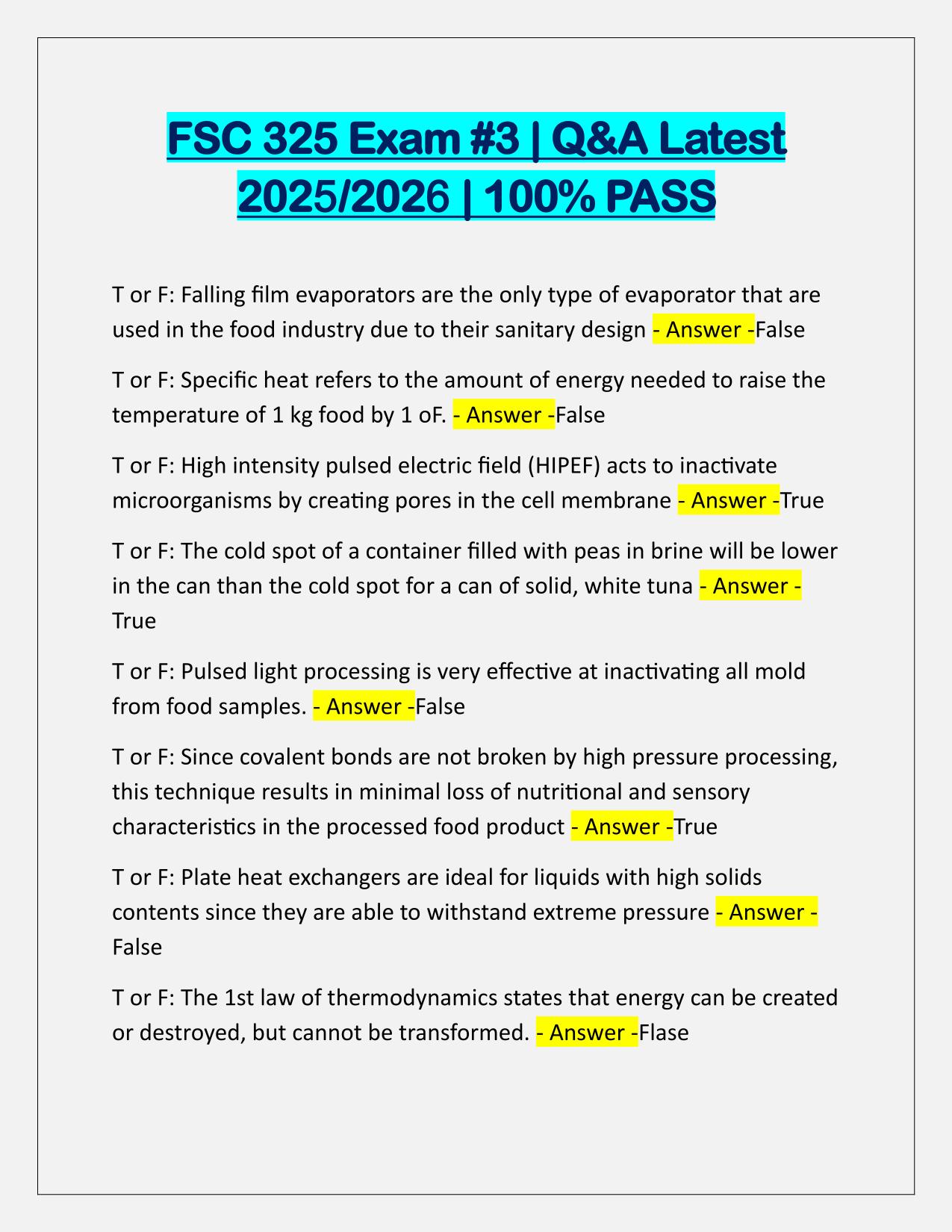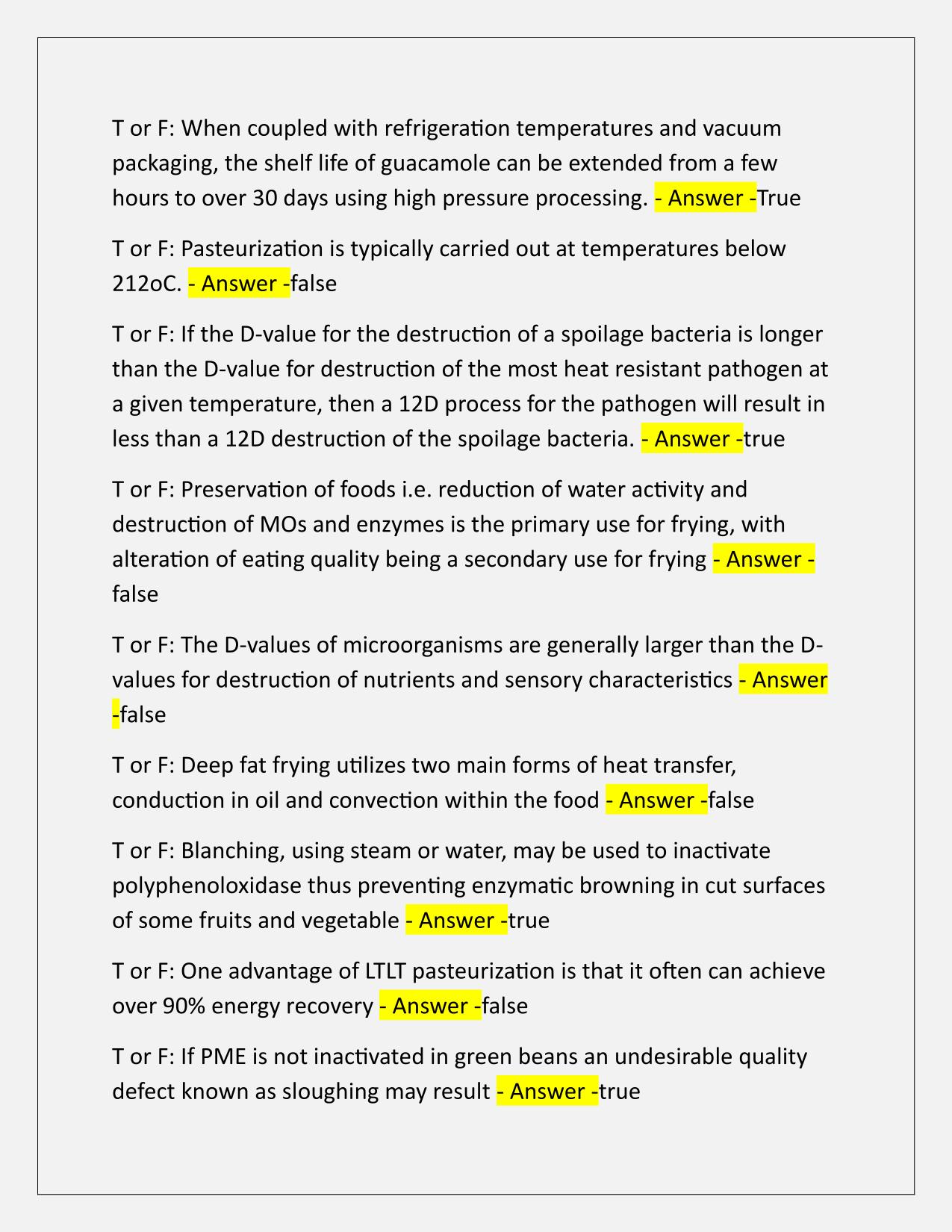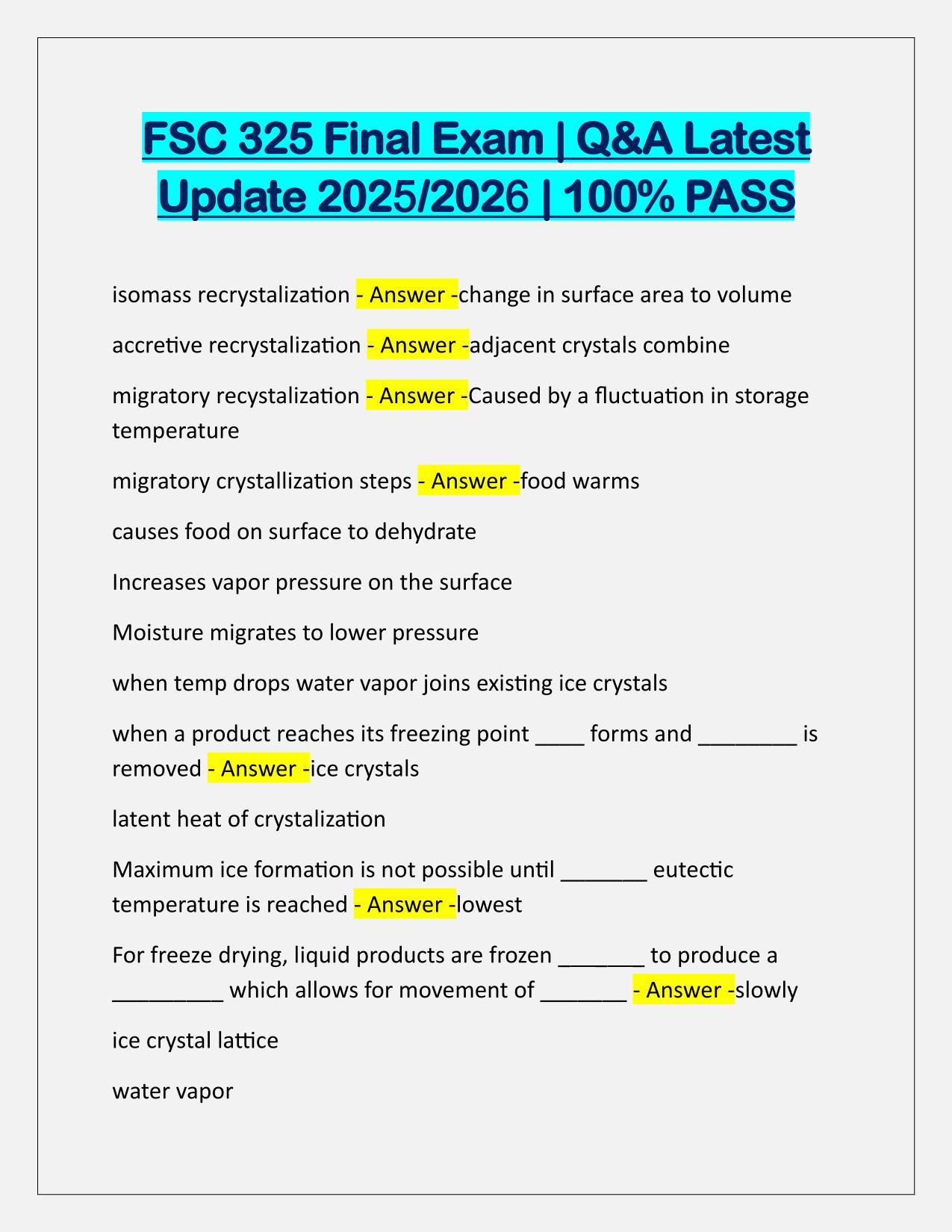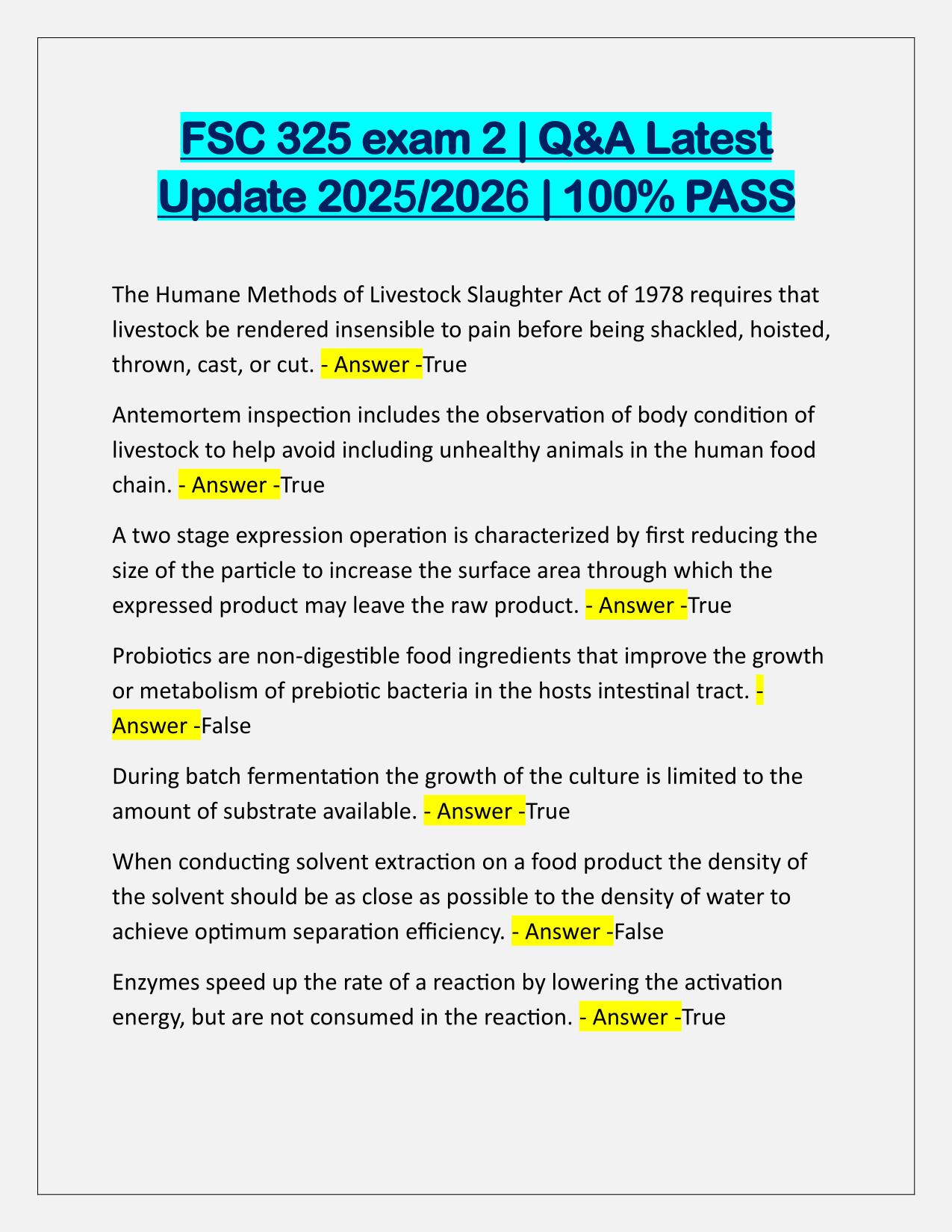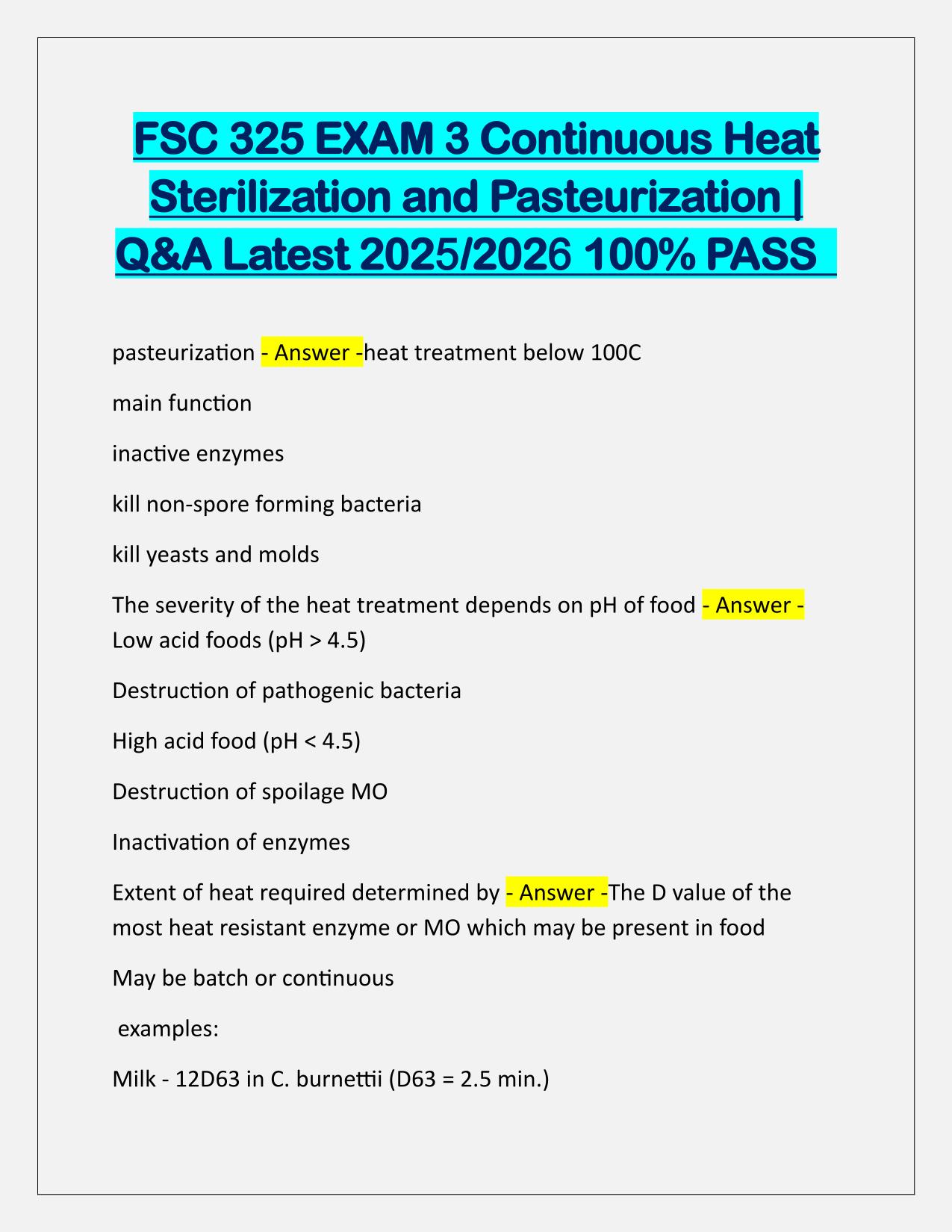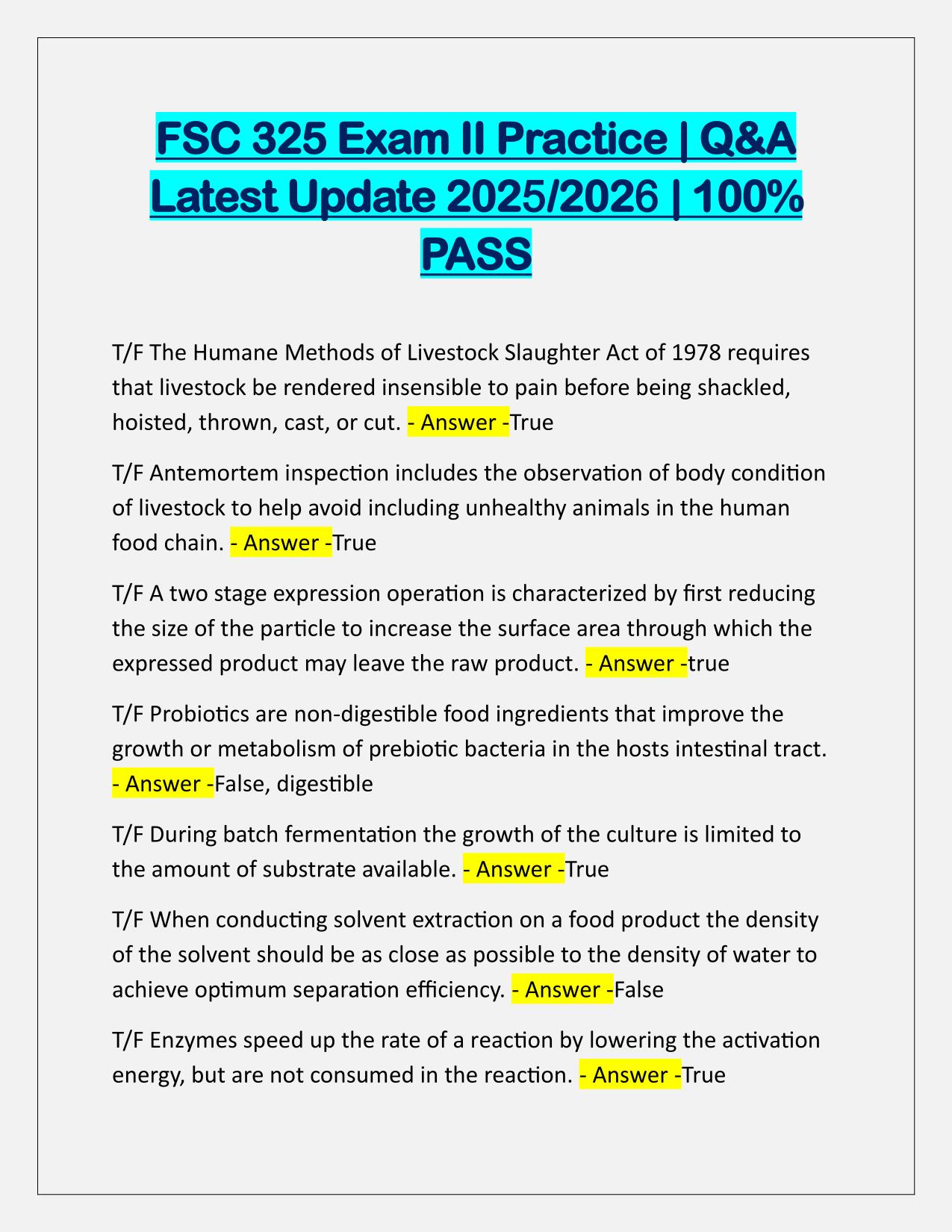FSC 325 Exam #3 Q&A Latest Update
Course:
FSC 325
Institution:
FSC 325
FSC 325 Exam #3 Q&A Latest Update
After purchase, you get:
✅ Instant PDF Download
✅ Verified answer explanations
✅ Refund if not Satisfied
✅ Prepared for 2025/2026 test cycle
Document Information
| Uploaded on: | May 12, 2025 |
| Last updated: | May 12, 2025 |
| Number of pages: | 9 |
| Written in: | 2025/2026 |
| Type: | Exam (elaborations) |
| Contains: | Questions & Answers |
| Tags: | FSC 325 Exam #3 Q&A Latest Update |
Seller Information

AdelineJean
User Reviews (0)
Exam (Elaborations)
$7.00
Bundle Deal! Get all 15 docs for just $29.50
Add to Cart
100% satisfaction guarantee
Refund Upon dissatisfaction
Immediately available after purchase
Available in Both online and PDF
$7.00
| 0 sold
Related Documents
Available in a Bundle
Content Preview
FSC 325 Exam #3 | Q&A Latest 2025/2026 | 100% PASS T or F: Falling film evaporators are the only type of evaporator that are used in the food industry due to their sanitary design - Answer -False T or F: Specific heat refers to the amount of energy needed to raise the temperature of 1 kg food by 1 oF. - Answer -False T or F: High intensity pulsed electric field (HIPEF) acts to inactivate microorganisms by creating pores in the cell membrane - Answer -True T or F: The cold spot of a container filled with peas in brine will be lower in the can than the cold spot for a can of solid, white tuna - Answer True T or F: Pulsed light processing is very effective at inactivating all mold from food samples. - Answer -False T or F: Since covalent bonds are not broken by high pressure processing, this technique results in minimal loss of nutritional and sensory characteristics in the processed food product - Answer -True T or F: Plate heat exchangers are ideal for liquids with high solids contents since they are able to withstand extreme pressure - Answer False T or F: The 1st law of thermodynamics states that energy can be created or destroyed, but cannot be transformed. - Answer -Flase
